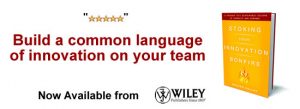How to Win in the Disruptive Economy: A New Playbook for Success
Leo Tilman and Charles Jacoby write in their book Agility: How to Navigate the Unknown and Seize Opportunity in a World of Disruption, “In today’s fast-changing environment, every company, no matter how large and powerful, should consider itself but one asteroid away from oblivionâ€. Our reality is this: we are in a new, turbulent normal and thriving in this environment requires a vastly different approach than the business playbooks of yester-year. Companies are scrambling to learn the new rules and find their footing,
So, knowing this, what are companies who are winning in the disruptive economy doing right?
- They are customer-obsessed.
- They take a panoramic lens to their competition.
- They are nimble and experimental.
Let’s unpack this power trio –
Being customer-obsessed goes beyond the notion of being customer-centric. Rather than adequately understanding customers, it is rooted in an ever-present need that permeates the organization to deeply empathize with and serve the customer at every touchpoint. This foundation establishes where a company should focus its efforts and investments to drive value for the customer.
Many companies fall prey to taking too narrow of a competitor view, the effect of which is like wearing blinders. By focusing on the traditional perception of industry competitors, these blinders prevent companies from seeing the threats that arise in their peripheral vision. This not only limits meaningful competitive assessment but creates myopic strategies and stifles disruptive innovation. In contrast, companies who instead assess their competition more broadly ask themselves questions like: Who else helps our customers achieve the same outcomes as we do? How are they doing it? What can we learn from them? How can we provide an advantage? This type of questioning considers a broader pool of competitors, and in doing so, provides added line of sight to new opportunities for growth, improvement, and innovation.
Lastly, being nimble and experimental is a trait indicative of companies that take action on their deep empathy for customers. Their focus is not limited to traditional ideas of customer experience and customer satisfaction. Instead, they set their sights much higher: they continually strive to create more value in their customers’ lives. This is the lynch pin in this power trio, as it is truly where the rubber meets the road based on the preceding two points. When put into practice and encouraged from the top-down, this becomes a distinguishing quality of companies that have been able to quickly pivot, innovate, and deliver meaningful value to their customers.
However, believing in the validity of the above steps and following through are two very different things—something many companies struggle to do. Why is this? All too often, corporations rely on traditional ways of managing their enterprise, and the use of operationally focused KPIs turns leaders’ attention inward rather than outward.
Why might this be?
- Enormous pressure to create value for shareholders driven by the belief that they are the preeminent stakeholders in the business
- Competing organizational priorities and organizational complexity
- Inability to directly link the relationship between customer value and increased financial outcomes and shareholder value
To address this critical gap, we have developed a patent-pending Value Exchange Model that quantifiably links KPIs—specifically Customer Lifetime Value (CLV) —with what customers value – Customer Performance Indicators (CPIs).
In effect, this product dissolves the number-one challenge companies experience by quantifying, with 95+% accuracy, the financial return via CLV that a company can expect if they achieve specific improvements to CPIs that matter to their customers.
How the Value Exchange Model changes the conversation
The Value Exchange Model not only more aptly levels the playing field between shareholders and customers, but it ensures they are speaking the same language—one of mutual value. It enables companies to connect how delivery on customer goals derives meaningful, measurable value for the company. No longer does it have to be a battle of who we serve: we can serve both customers and shareholders.
In times of disruption, it is essential to reassess, recalibrate, and think differently. The path forged between historic KPIs and of-age CPIs through the Value Exchange Model empowers companies to reimagine how to create value and achieve customer-centered growth. The model creates cohesion between what were once two competing forces – what creates value for our shareholders and what creates value for our customers. Through this recalibration, we can help companies win in the disruptive economy by articulating the financial gain for being: customer-obsessed, taking a panoramic lens to their competition, and being nimble and experimental to drive meaningful value for customers and in turn, shareholders.
NEVER MISS ANOTHER NEWSLETTER!
LATEST BLOGS
Starbucks and Big Tobacco
Back in the 1950’s smoking was glamorous, and just about everybody who was anybody smoked cigarettes. Then came the discovery, to the shock of millions, that sucking smoke into your lungs might not be good for you. Then came another revelation that one of the substances in tobacco, nicotine, which was used as a poison by the Egyptians during the times of the Great Pyramids, is addictive. People then began a mass exodus from the consumption of nicotine via inhaled smoke.
Read MoreWal-Mart Goes Green – What about your company?
With the price of gas above $3.00, some companies (and hopefully all) are beginning to look at the fuel efficiency of their fleets. Wal-Mart is the most public example of this with its trucking fleet. Its efforts include:
Read More



[…] As published in Disruptor League. […]